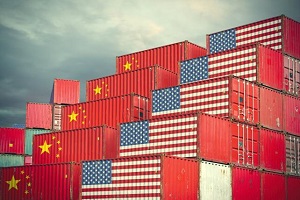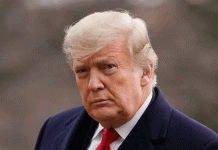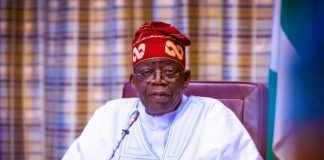US President Donald Trump and Chinese leader Xi Jinping could meet later this month to end the year-long trade war between the two countries.
The Wall Street Journal reported Sunday that the two sides are in the final stages of negotiating a deal that would involve the lowering of Chinese tariffs on a range of US goods if the Trump administration removes broad sanctions against Beijing.
According to the paper, both sides believe talks have progressed far enough that Trump and Xi could reach a formal agreement at a potential meeting around March 27. The report follows Trump’s comments last week that two sides were “getting very, very close” to a deal and that he planned to meet Xi at his Mar-a-Lago resort in Florida.
Progress toward a deal is welcome news for the Chinese government as top leaders gather this week in Beijing for major political events.
Sunday was the first day of the annual Chinese People’s Political Consultative Congress, a body that nominally advises on laws and policy and whose members include numerous retired officials and celebrities. The National People’s Congress, China’s rubber stamp parliament, begins its annual session on Tuesday.
Trump asks China to remove all agricultural tariffs on US
An end to the US-China trade war, even if only temporary, would be a major win for President Xi and his government, who have been trying to counter a slowdown in the Chinese economy.
The economic downturn has hammered the country’s stock market and prompted warnings from top companies like Apple (AAPL) and Caterpillar (CAT).
The escalating trade war, in which the two sides imposed tariffs on huge chunks of each other’s exports, has piled extra pressure on the Chinese economy, which was already losing momentum as a result of government efforts to rein in risky lending.
China’s benchmark stock index, the Shanghai Composite (SHCOMP), was up more than 2.5% on Monday following the Journal’s report.
The article listed a range of elements the potential trade deal may cover, including lower Chinese tariffs on US agricultural, chemical and auto products, as well as the continued removal of barriers to foreign investment.
In addition, China would purchase more American goods in an attempt to narrow the US trade deficit, an issue on which Trump has long focused his attention.
The decision last week by the Trump administration to indefinitely postpone a looming increase in tariffs on $200 billion of Chinese exports was a promising sign for a deal between the two countries.
While the Journal report suggested a deal was a possibility rather than a certainty, Trump had earlier called the planned meeting with Xi a “signing summit.”
There have been some signs of disagreement inside the Trump administration about whether the time is right to make a deal with Beijing.
US Trade Representative Robert Lighthizer, a longtime China hawk, told lawmakers on Wednesday that Beijing needed to provide “specific, measurable” concessions that were “enforceable at all levels of the government.”
“I’m not foolish enough to think there’s one negotiation that’s going to change all the practices with China or our relationship with them,” said Lighthizer. “I view this as a process.”
Among the most contentious issues between the two countries are Beijing’s aggressive industrial policies that pump huge sums of money into boosting homegrown companies in key sectors, and US complaints that China forces US companies to hand over valuable technology in order to do business in the country.
“There are still significant structural differences between the two countries on issues such as forced technology transfer, intellectual property right protection and market access,” Tai Hui, JPMorgan Asset Management’s chief market strategist for Asia Pacific, said in a commentary Monday.
“Investors are fully aware of these long-term challenges, but a more sustained ceasefire on tariffs will help to reduce business uncertainty,” he added.
Beijing and Washington have also clashed over key technology companies, with the US government taking action to crack down on Huawei and other Chinese firms in the past year.














